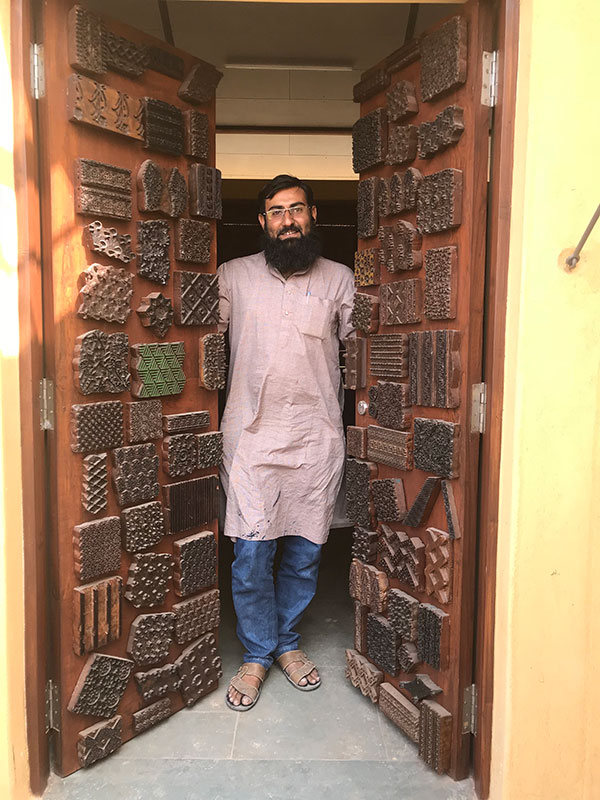Ismail and Juned Khatri are 9th and 10th generation textile artists practicing the traditional skill of hand block ajrakh printing. Their textiles are known for their jewel-like colors and geometric, floral, and architectural patterns. Innovation comes into their work with the addition of clamp dye and shibori stitching techniques to create dramatic designs. They have begun to layer new products and color combinations into their work to create an even more extensive range of intricate designs. Their bright blues and reds in particular are achieved with natural dyes and expert manipulation of materials.
Ajrakh cloth is made in a 16-step process, and requires a high level of skill, concentration, and collaboration with highly skilled woodblock carvers, block printers, dyers, and washers. The base cloth is washed to remove any impurities, soaked in a solution of castor oil, soda ash and camel dung overnight, and left to dry the following day in the sun. When it is semi-dry, it is returned to the solution and dried at least seven times, until the cloth foams when rubbed. After rinsing in plain water, the cloth is next dyed in a cold solution of myrobalan (powdered nut of the harde tree), which turns the cloth a yellow color and works as a mordant, helping to fix the dyes. The cloth is then calendared and laid flat to dry in the hot sun. Next, aresist paste of lime and gum arabic is printed on to the cloth to define the outlines of the design.
Next, a paste of fermented iron, cane sugar, gram flour and tamarind is used to print black elements of the design. After, red follows, then indigo – each color being an intricate dance of resist pastes and dyestuffs. Eventually the whole design is treated with boiled pomegranate skins, and washed and sun-dried. The final product is very soft to the touch, and richly, almost mysteriously colored – a true feast for the senses.
Juned has begun to innovate within the ajrakh tradition by contemplating aspects of international minimalism, which has subtly transformed his new compositions.
